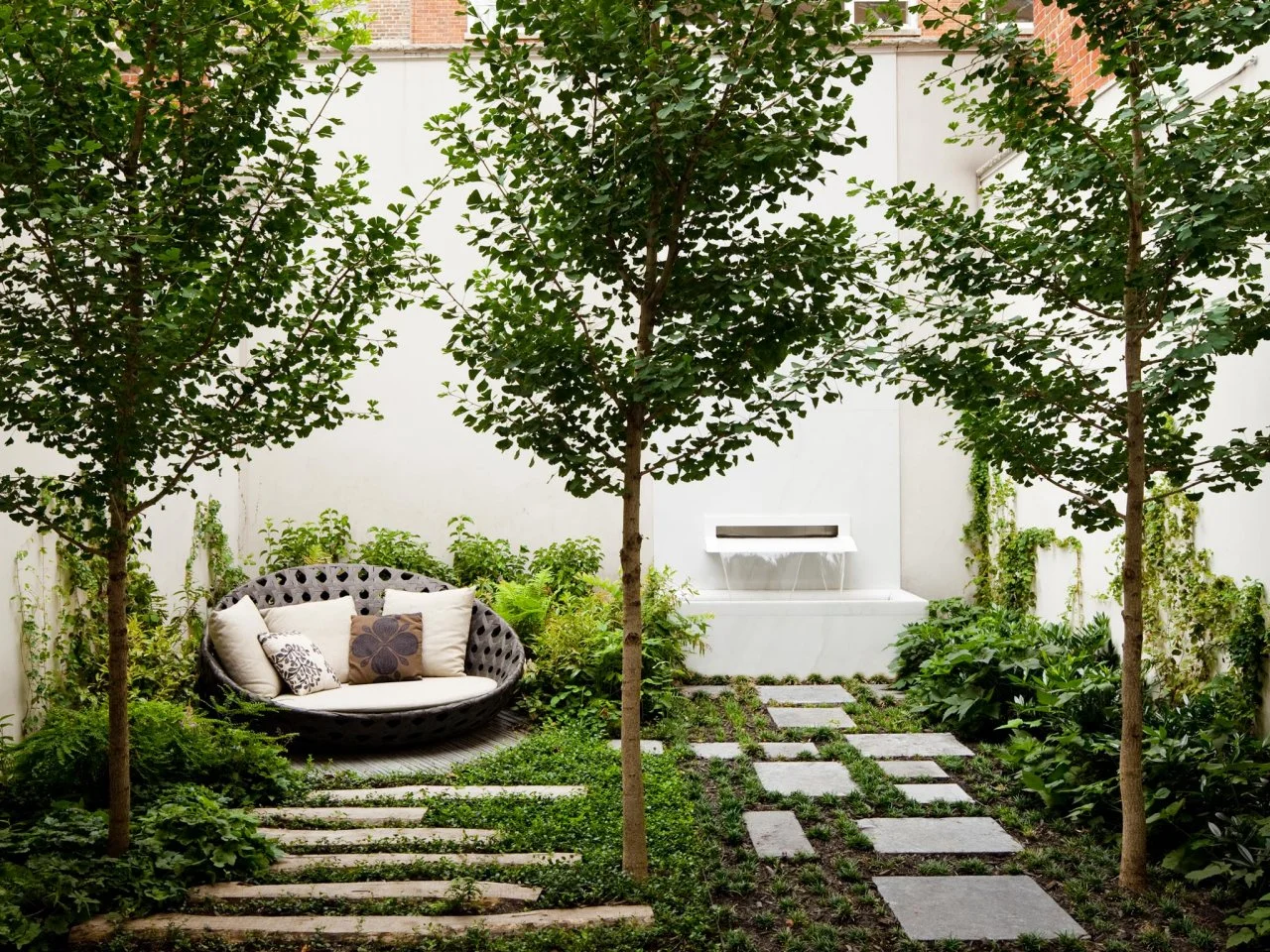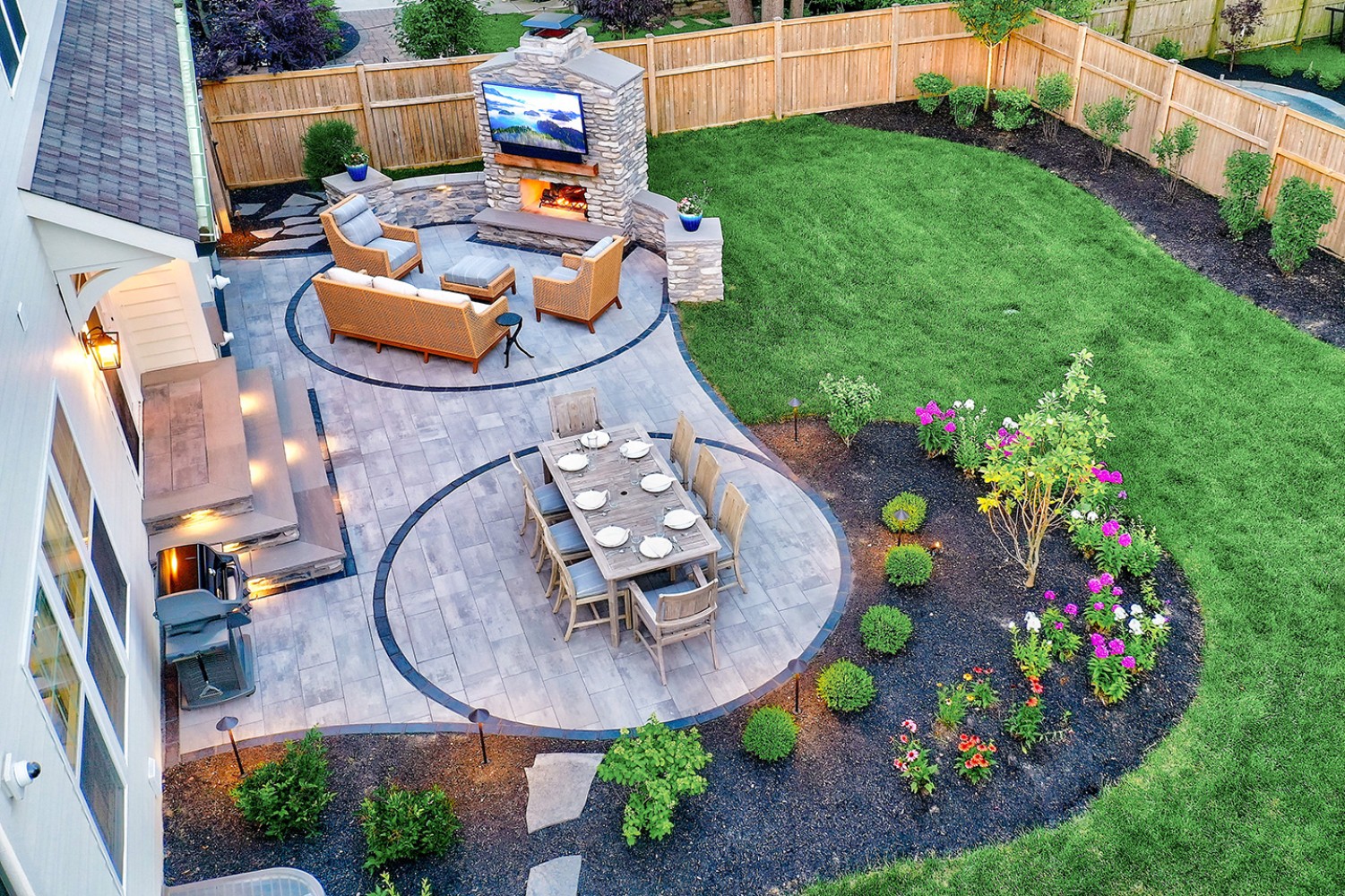Artificial Grass vs. Natural Lawn: Which Is Right for Your Home?
Wiki Article
Transform Your Yard With Innovative Landscape Design Techniques and concepts
Transforming a garden calls for thoughtful consideration of its special attributes. Reliable landscape Design can enhance both performance and visual allure. By exploring different strategies, one can create a space that not just shows personal style however likewise sustains neighborhood biodiversity. As the journey unfolds, questions about plant layout, sustainability, and option occur, prompting a much deeper expedition right into just how to make these ideas come to life.Assessing Your Outdoor Room: Comprehending Your Yard's Potential
Reviewing exterior room is necessary for reliable landscape style. Understanding the distinct attributes of a yard permits developers to maximize its capacity. Elements such as soil high quality, sunshine direct exposure, and existing structures play a vital function in determining what can be attained. Analyzing the topography helps identify areas for planting, paths, or water attributes, while noting water drainage patterns assures that plants flourish without waterlogging.Acknowledging the garden's microclimates can influence plant option and positioning. Observing how the room is made use of by residents educates functional Design choices, such as seating areas or play areas. Additionally, considering the bordering setting and bordering landscapes can give motivation and context for Design choices. By thoroughly analyzing these components, one can create a natural and welcoming exterior room that reflects the owner's vision while harmonizing with nature. Eventually, a detailed analysis lays the foundation for an effective landscape Design task.
Picking the Right Plant Kingdoms: An Overview to Color, Structure, and Seasonal Interest
When picking plants for a landscape design, comprehending the interaction of color, structure, and seasonal interest is necessary for developing a vivid and dynamic garden. Shade can evoke emotions and established the tone for the space; consequently, selecting an unified palette improves aesthetic allure. Warm tones like oranges and reds develop energy, while cooler tones like blues and greens use tranquility.Appearance includes deepness and measurement, allowing for a mix of vegetation forms and dimensions. Integrating fine-textured plants with bold-leaved ranges develops comparison and intrigue.
Seasonal passion is very important for keeping year-round elegance. Picking a selection of plants that flower in various periods warranties that the yard stays vibrant, changing from spring's vibrant flowers to fall's abundant vegetation. By thoughtfully thinking about these aspects, one can curate a landscape that is not only aesthetically pleasing but also varied and interesting throughout the year.

Producing Practical Areas: Creating Spaces for Relaxation and Enjoyment
Developing functional zones in a landscape Design boosts the usability of outside rooms, allowing property owners to seamlessly blend relaxation and enjoyment. By thoughtfully separating locations right into distinctive areas, people can deal with numerous activities, from quiet hideaways to vibrant celebrations. A properly designed space may include a cozy reading nook nestled amongst lavish greenery, offering a serene escape (Landscaping Design San Diego). On the other hand, a lively outside eating location can work as the excellent setup for celebrations with household and friendsStrategically positioned paths can lead guests in between these zones, making sure very easy navigating. Furthermore, integrating aspects like seating areas, fire pits, or water features can enhance the total setting and performance. The combination of varied textures and shades in each area can produce visual passion while keeping a natural aesthetic. Inevitably, making practical zones allows homeowners to optimize their outside experience, transforming their yards right into flexible spaces that fulfill varied lifestyle demands.
Including Hardscape Aspects: Patios, Walkways, and Focal Points
Including hardscape aspects into landscape Design enhances functional areas by offering framework and aesthetic appeal. Patios serve as necessary outside living rooms, permitting home owners to appreciate dishes and events in a defined location while enhancing accessibility. The choice of products, such as all-natural rock or concrete, can considerably influence the overall aesthetic, mixing flawlessly with the surrounding setting.Pathways assist in motion with the yard, assisting site visitors while adding deepness and interest. These courses can be crafted from various materials, consisting of gravel, pavers, or brick, each contributing to the yard's personality.
Centerpieces, such as attractive boulders, sculptures, or water functions, attract the eye and create a feeling of objective within the landscape. Tactically put, these elements can transform an ordinary yard right into an appealing room, inviting expedition and involvement. Through thoughtful assimilation of hardscape, a landscape comes to be not just functional but additionally aesthetically spectacular.
Enhancing Personal Privacy and Security: Natural Obstacles and Structures
To improve personal privacy and security in landscape style, using all-natural obstacles such as dense bushes can successfully secure a building from unwanted views. Furthermore, setting up personal privacy fencings provides a solid structure that adds to a feeling of security and privacy. Together, these elements develop a more intimate outdoor area while deterring prospective invasions.Growing Thick Hedges
While many homeowners look for visual allure in their landscapes, growing dense hedges serves a twin objective of boosting personal privacy and protection. These all-natural obstacles create a visual guard, properly obstructing the view from prying eyes and discouraging potential intruders. Numerous varieties, such as boxwood, holly, or privet, can be selected for their growth patterns and vegetation thickness, making sure lush coverage throughout the year. Additionally, properly maintained bushes can contribute to a tranquil setting, absorbing sound and supplying an environment for wildlife. The strategic positioning of these hedges can specify home boundaries and develop remote exterior areas, allowing home owners to enjoy their yards with a feeling of safety. Inevitably, dense bushes are an efficient solution for mixing charm with capability.
Installing Privacy Fences
Privacy fencings offer as an additional effective approach for improving privacy and security in property landscapes. These frameworks not just define residential property borders yet also produce a feeling of seclusion, securing house owners from spying eyes. Numerous products, such as vinyl, timber, and metal, deal distinct aesthetics and levels of resilience, allowing house owners to select based on their Design preferences and maintenance demands.
Sustainable Landscape Design: Eco-Friendly Practices for a Greener Yard
Sustainable see here now landscape design emphasizes the significance of indigenous plant selection and water conservation techniques. By selecting plants that are well-adapted to the local atmosphere, garden enthusiasts can lower upkeep and resource usage. Executing reliable sprinkling techniques further improves the garden's ecological benefits, promoting a much healthier environment.Indigenous Plant Choice
Native plant option plays a necessary duty in sustainable landscape design, promoting biodiversity and minimizing the need for chemical inputs. By selecting plants belonging to a specific area, garden enthusiasts can produce habitats that support regional wild animals, such as pollinators, birds, and advantageous insects. These plants are adapted to the regional environment and soil conditions, calling for much less water and upkeep contrasted to non-native varieties. Additionally, native plants can assist control disintegration and boost soil health, fostering a balanced environment. Integrating native species right into check it out landscape creates not only boosts the visual appeal of the garden but likewise adds to ecological resilience. Ultimately, indigenous plant option is an important method for those seeking to cultivate a lively and sustainable garden.Water Preservation Techniques
Including indigenous plants can greatly boost water preservation efforts in landscaping. These plants are well-adapted to local climates, requiring less water and maintenance than non-native varieties. Executing drip irrigation systems permits targeted watering, reducing evaporation and drainage. Rainwater gathering systems can additionally be mounted, accumulating and saving rainwater for garden usage. Mulching aids preserve dirt dampness, minimizing the frequency of watering. Organizing plants with comparable water needs with each other produces efficient sprinkling zones, further preserving water. Furthermore, using absorptive materials for paths permits rainwater to seep right into the ground, renewing groundwater supplies. By utilizing these water conservation methods, garden enthusiasts can produce lasting landscapes that prosper while minimizing ecological impact (Landscaper). Such techniques contribute to a greener yard and a healthier environmentPersonalizing Your Layout: Adding Special Features and Individual Touches
How can one change a garden right into an individual shelter? Personalizing a landscape Design entails integrating unique functions that mirror individual preferences and lifestyles. One method is to include customized yard art, such as sculptures or handcrafted birdhouses, which can work as focal points and conversation beginners. Furthermore, personalizing plant selections based on seasonal blooms or personal choices can create a vivid and progressing room.Producing useful locations, such as a comfortable analysis nook or an outdoor dining room, can enhance functionality and convenience. Incorporating elements like a fire pit or a water attribute can present a welcoming setting.
Shade plans, materials, and structures should align with the property owner's style, whether it be contemporary, rustic, or eclectic. Ultimately, the goal is to create a space that resonates with the individual's identity, making the yard not just an aesthetic pleasure however a true extension of the house owner's individuality.
Regularly Asked Questions
How Do I Budget plan for a Landscape Design Task?
To allocate a landscape Design job, one must analyze job extent, study costs for materials and labor, prioritize attributes, and allocate an extra 10-20% for unanticipated expenditures, ensuring a realistic financial plan.What Devices Are Important for Home Garden Landscaping?
Crucial devices for home yard landscaping include a shovel, rake, yard look at more info fork, pruning shears, trowel, wheelbarrow, and hoe. These instruments aid in dirt prep work, planting, upkeep, and effective transportation of products throughout the landscape design project.Exactly How Can I Preserve My Garden After Revamping?
To keep a redesigned garden, routine watering, mulching, weeding, and trimming are necessary (Landscaping Contractor). Surveillance plant health and wellness, changing dirt nutrients, and seasonal plant care add to a growing setting that showcases the yard's new Design effectively
When Is the most effective Time to Start Landscaping?

Can I DIY My Landscape Design or Should I Hire a Professional?
Individuals can certainly DIY their landscape Design if they possess creative thinking and standard skills; however, hiring a professional commonly assures an extra cohesive and expert result, particularly for complicated tasks or details Design desires.Recognizing the yard's microclimates can influence plant selection and placement. When selecting plants for a landscape design, recognizing the interplay of shade, texture, and seasonal passion is necessary for creating a vivid and dynamic garden. Picking a variety of plants that grow in different seasons warranties that the garden continues to be lively, moving from springtime's dynamic blossoms to autumn's abundant vegetation. Including native types right into landscape designs not only enhances the aesthetic allure of the yard yet additionally contributes to environmental strength. Essential tools for home yard landscape design include a shovel, rake, garden fork, trimming shears, trowel, wheelbarrow, and hoe.
Report this wiki page